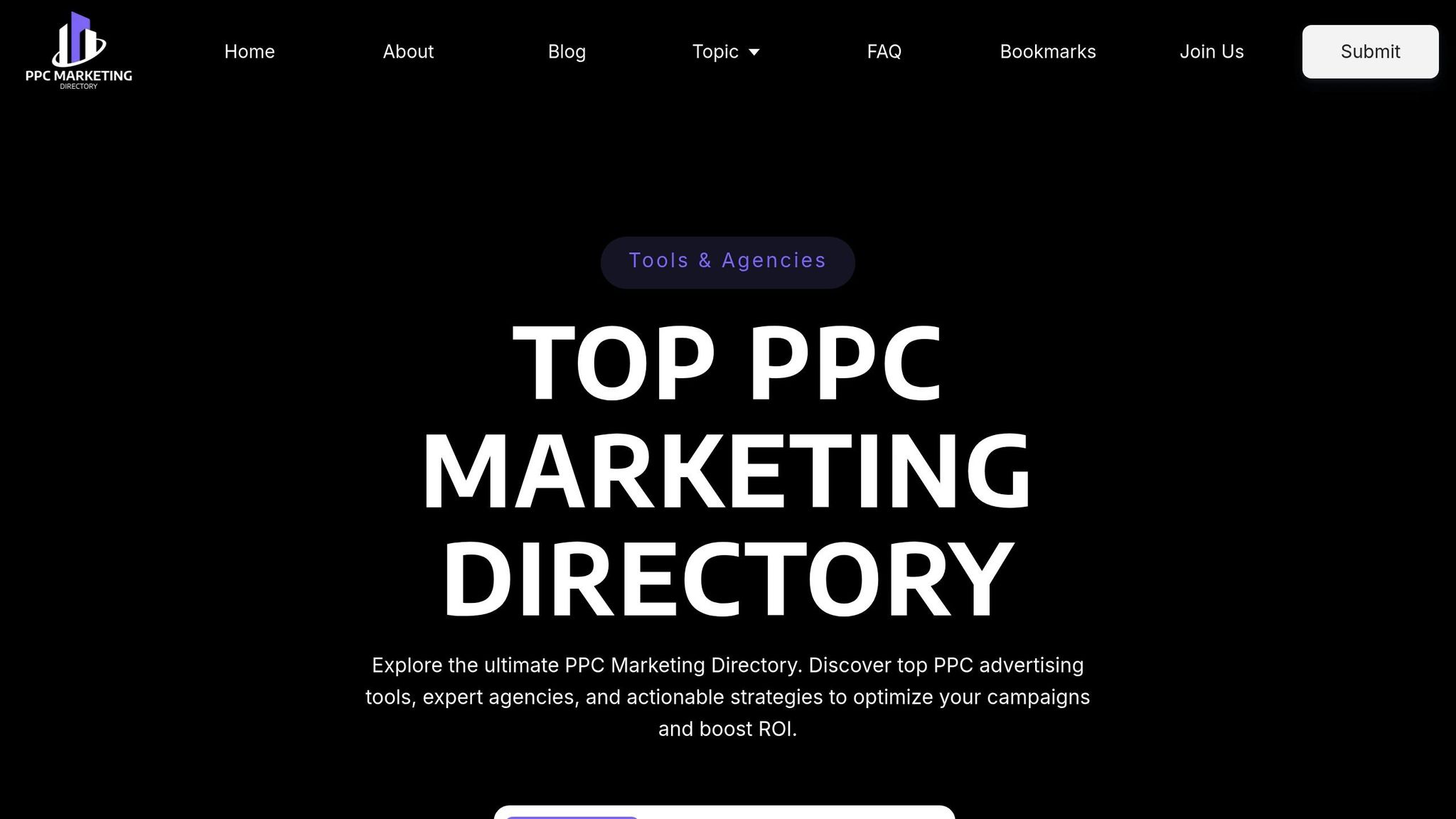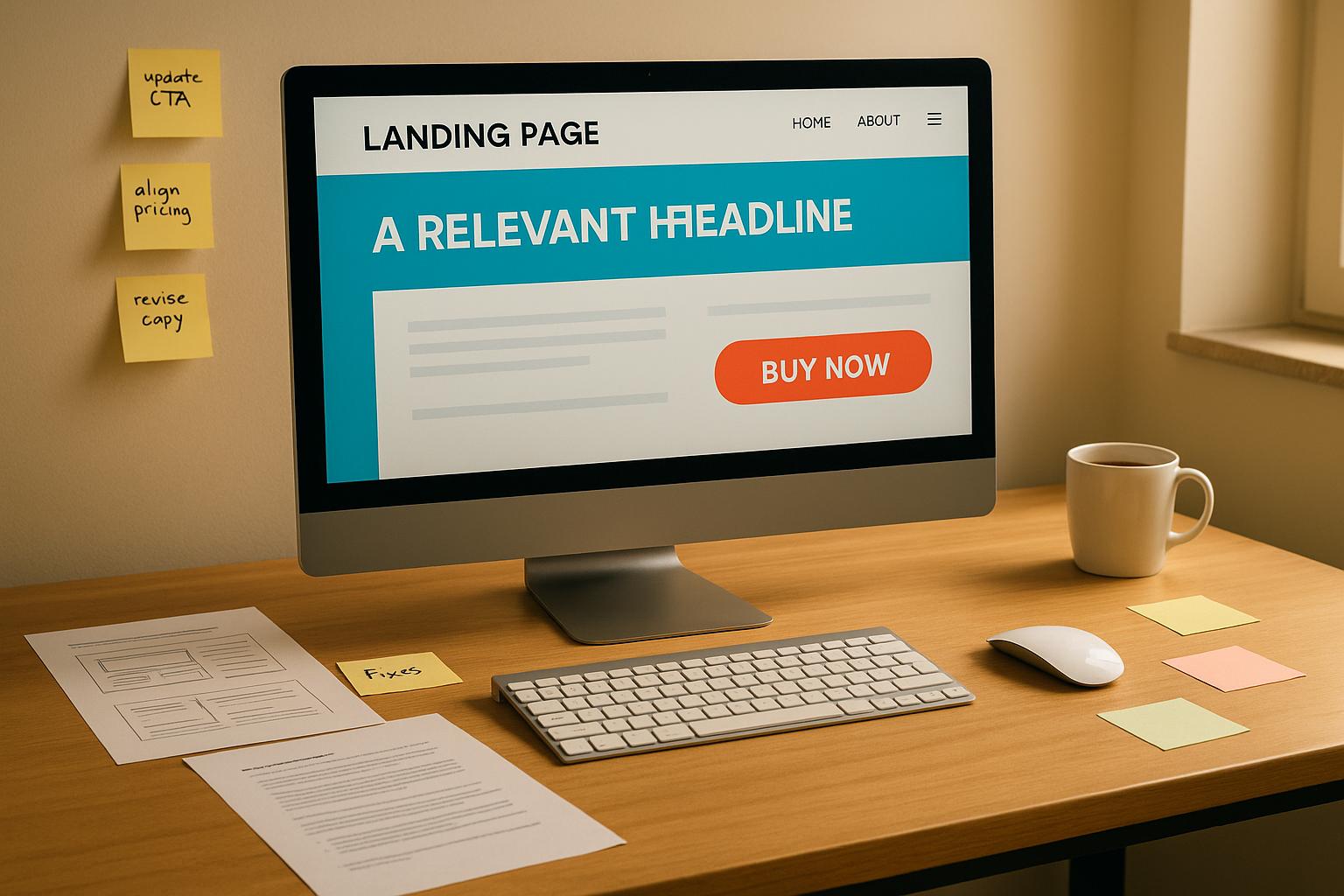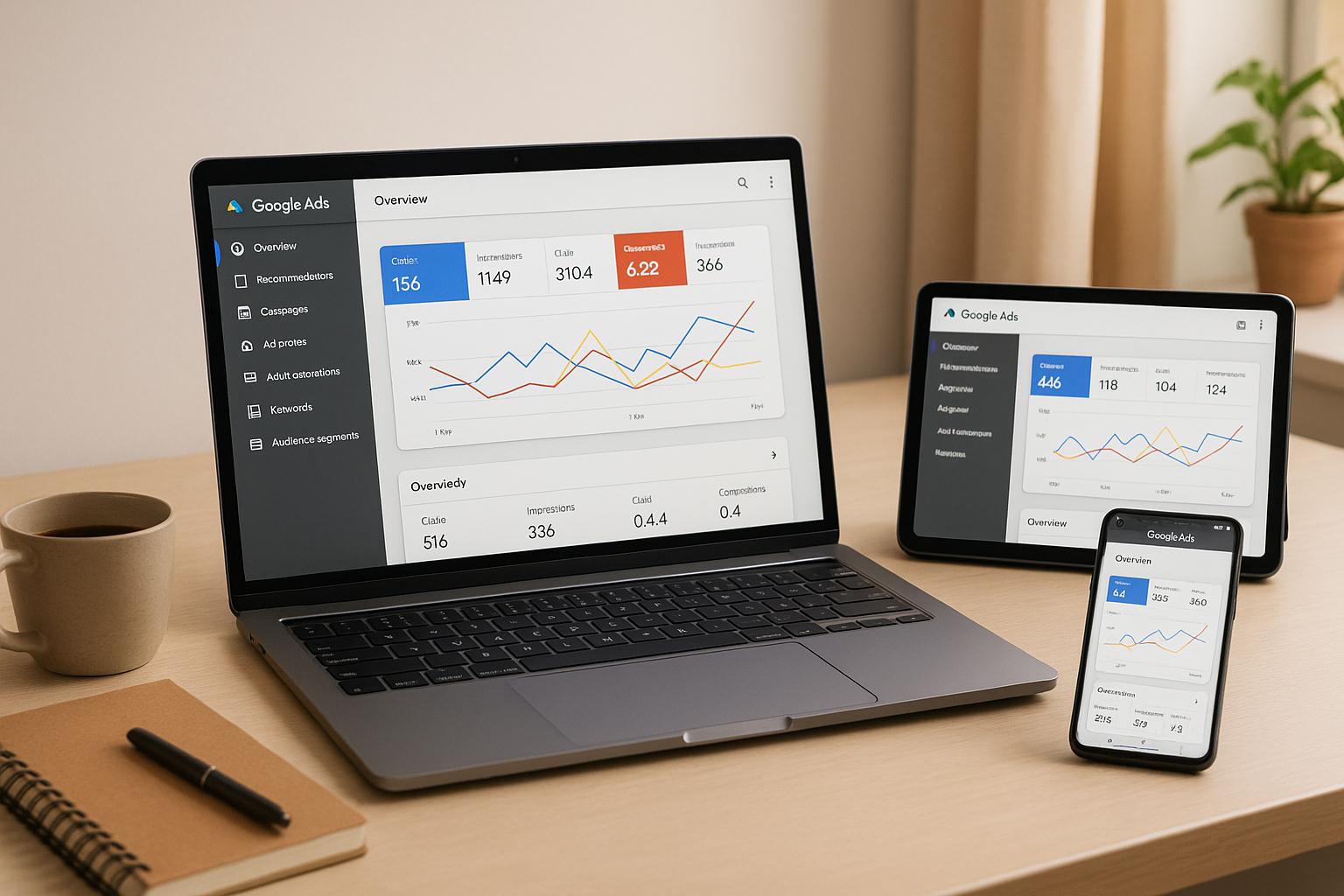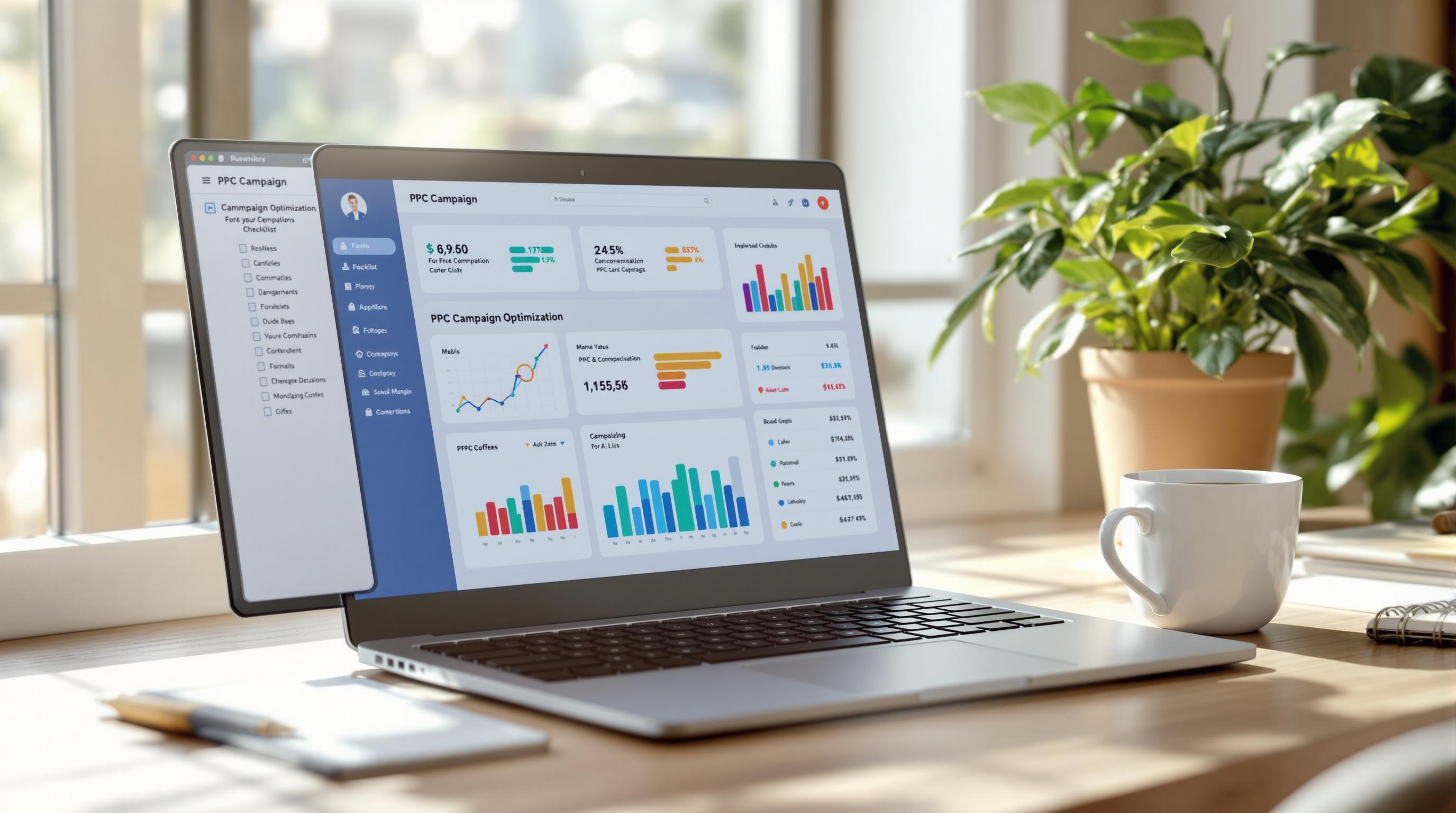Running YouTube ads without testing is like guessing what works. A/B testing helps you compare two ad versions to see which performs better. Here's a quick guide to get started:
- What to Test: Video content, thumbnails, headlines, descriptions, CTAs, and audience targeting.
- How to Test: Use Google Ads Experiments for automated tests or set up manual campaigns if you need more control.
- Key Metrics: Focus on CTR, conversion rate, CPV, and brand lift to measure success.
- Best Practices: Test one variable at a time, gather at least 1,000 impressions daily, and wait for 95% statistical confidence before acting.
A/B testing ensures your budget is spent effectively, helps refine your strategy, and improves campaign performance over time.
How to Run an Experiment with YouTube Video Ads - Tutorial
Setting Up YouTube Ad A/B Tests
When it comes to setting up YouTube ad tests, you have two main options: using Google's built-in experiment tools or opting for manual testing. The choice depends on how much control you need over the process.
What You Need Before Testing
Before diving into testing, make sure you’re prepared. First, you’ll need an active Google Ads account with access to YouTube campaigns. Just as important is having a clear goal in mind. Are you aiming to boost conversions, improve click-through rates, or lower your cost per view? Defining your objectives will help you stay focused and measure success accurately.
To get reliable results, each test variation should generate at least 1,000 impressions per day. This ensures you collect enough data within a reasonable timeframe. Without sufficient traffic, your test might drag on for months or yield unreliable insights.
Budgeting is another key step. Plan for enough funds to run both test groups for 3-4 weeks without interruptions. Running out of budget halfway through could waste both time and valuable data.
Using Google Ads Experiments

Google Ads Experiments offers an automated way to conduct A/B tests. To begin, go to your campaign in Google Ads and click on the "Experiments" tab. From there, you can create a new experiment and select the campaign you want to test.
The setup is simple. You’ll set the experiment split - most advertisers stick to a 50-50 split to ensure unbiased results. Next, define the variable you want to test, such as ad creative, targeting, or bidding strategies. Google takes care of distributing traffic evenly between your control and test groups.
One big advantage of this method is that Google tracks statistical significance for you. It alerts you when your results hit confidence levels of 80%, 90%, or 95%, so you can trust the data without second-guessing. This automation reduces the risk of external factors interfering with your results.
Here’s an example: In 2023, a car manufacturer tested two YouTube ads for a new SUV using this method. The experiment targeted users interested in luxury vehicles, and one ad delivered 8x more conversions than the other. This data directly influenced their creative strategy for future campaigns.
If you need more control or are working with campaign types that don’t support automated experiments, manual A/B testing might be a better fit.
Manual A/B Testing Method
For advertisers who prefer hands-on control or are dealing with campaigns that don’t allow automation, manual A/B testing is an option. This method involves creating two separate campaigns or ad groups with identical settings, except for the one variable you want to test.
Both campaigns should have equal budgets and run at the same time. This approach is useful for testing variables that Google’s automated tools can’t handle or for those who want to manage every detail of the experiment.
However, manual testing comes with challenges. It’s more vulnerable to outside influences like seasonal trends or shifts in audience behavior, which can skew your results. You’ll also need to calculate statistical significance manually, requiring more effort and attention to detail.
| Method | Automation Level | Key Features | When to Use |
|---|---|---|---|
| Google Ads Experiments | Automated | Traffic split, statistical significance tracking, scheduling | Most YouTube ad campaigns |
| Manual A/B Testing | Manual | Duplicate campaigns, custom timing, full control | When automation isn’t available or more control is needed |
Manual testing is best suited for advertisers comfortable with analyzing data and managing experiments. To maintain the integrity of your results, avoid making any changes to the campaigns while the test is running.
What to Test and How to Measure Results
Once your YouTube ad campaign is set up, the next step is identifying which elements influence viewer behavior and tracking the right metrics to gauge performance.
Elements to Test in YouTube Ads
Your video content is one of the most critical aspects to test. The opening seconds are pivotal - this is where you either hook viewers or lose them. Experiment with different approaches, such as starting with a problem your audience relates to or leading with a compelling customer testimonial. Also, test your storytelling style and visuals to see what keeps viewers engaged.
Headlines and descriptions are your first chance to grab attention and encourage clicks. The headline, prominently displayed in search results and suggested videos, is key to drawing viewers in. Try different headline variations, emphasizing unique benefits or using emotional appeals. For descriptions, adjust the length and tone - some viewers may prefer detailed explanations, while others respond better to short, action-driven messages.
Calls-to-action (CTAs) are crucial for driving conversions. Small changes in wording, such as switching from "Learn More" to "Get Started", can have a big impact. Test different placements of your CTA within the video and tweak the urgency or phrasing to see what resonates most with your audience.
Audience targeting determines who sees your ads, making it a key element to test. Experiment with different demographic groups, interest categories, or custom audiences built from your customer data. A slightly narrower or broader audience might yield better results than your initial setup.
| Element | Primary Impact | Testing Focus |
|---|---|---|
| Video Content | Click-through rate, watch time | Opening hooks, storytelling style, visuals |
| Headlines | Click-through rate, brand awareness | Benefit emphasis, emotional appeal, length |
| Descriptions | Click-through rate, conversions | Message length, detail level, tone |
| CTAs | Conversion rate | Wording, placement, urgency level |
| Audience Targeting | Overall performance | Demographics, interests, custom segments |
Testing these elements allows you to pinpoint what works best and refine your strategy accordingly.
Metrics That Matter Most
To evaluate your ad performance, focus on these key metrics:
- Click-through rate (CTR): This measures how often viewers click on your ad. A high CTR indicates that your ad is resonating with your audience and your targeting is on point.
- Conversion rate: This tracks the percentage of viewers who take your desired action, like making a purchase, signing up for a newsletter, or downloading an app. It’s directly tied to your business objectives.
- Cost-per-view (CPV): CPV shows how efficiently you’re using your budget to generate views. A lower CPV means you’re reaching more people without overspending, which is especially important for brand awareness campaigns.
- Brand lift: This metric assesses changes in brand awareness, consideration, or purchase intent among viewers who saw your ads. While harder to track than direct response metrics, it provides valuable insights into your campaign’s long-term impact.
How to Choose What to Test First
Once you’ve identified the metrics that matter most, prioritize tests that align with your campaign goals. For example, if your primary objective is driving website traffic, start by testing CTAs or headlines since they directly influence clicks. On the other hand, for brand awareness campaigns, focus on video content and thumbnails, as these elements affect initial engagement.
Always test one variable at a time to ensure clear results. Testing multiple elements simultaneously might seem faster, but it makes it harder to pinpoint what caused the improvement. While this approach may feel slower, it delivers more reliable data.
Start with areas where you have a strong hypothesis or where your current performance shows room for improvement. For instance, if your CTR is below industry benchmarks, focus on refining your headlines or thumbnails. If viewers are clicking but not converting, shift your attention to optimizing your CTA.
Finally, weigh the potential impact against the effort required. Testing video content can be resource-intensive, while tweaking headlines or descriptions is quicker and easier. If you’re working with limited time or budget, begin with simpler adjustments and move on to more complex tests as you gather insights.
To streamline your testing process, consider using specialized tools. Check out resources like the Top PPC Marketing Directory for A/B testing solutions tailored to YouTube ads.
sbb-itb-89b8f36
Reading Results and Making Changes
Once your YouTube ad tests have been running for a few weeks, it’s time to dive into the data, make sense of the results, and tweak your campaigns to improve performance.
How to Read Your Test Results
The Google Ads Experiments dashboard makes it simple to review your test outcomes. It provides side-by-side comparisons of your ad variations and even calculates performance differences for you. The platform also highlights whether the results are statistically significant, using confidence levels of 80%, 90%, or 95% to help guide your decisions.
For the best results, only act on data that reaches the 95% confidence level. Anything below that threshold may not be reliable enough to justify changes.
When analyzing your results, focus on metrics that match your campaign's goals:
- Website traffic campaigns: Look at differences in click-through rates (CTR).
- Conversion-focused campaigns: Pay attention to conversion rates and cost per conversion.
- Brand awareness campaigns: Prioritize metrics like view rates and watch time.
In 2024, a car manufacturer tested two YouTube ads aimed at luxury SUV buyers. Using "Conversions" as their success metric, they found one ad delivered up to 8 times more conversions than the other after several weeks of testing.
If your results lack statistical significance, avoid rushing to conclusions. Instead, extend the test duration or increase the sample size by adjusting your budget. Picking a "winner" prematurely can lead to inaccurate decisions. Also, avoid testing multiple variables at once - this can muddy the waters, making it hard to identify what actually drove performance changes.
Once your test achieves statistical significance, you’re ready to implement the winning variation.
Using Winning Variations
After identifying the top-performing variation, the next step is to integrate those insights into your campaign. Google Ads Experiments offers an "Apply" feature that lets you seamlessly update your live campaign with the winning settings.
Here’s how to put those results to work:
- Update creative elements: If a specific visual or message performed better, incorporate those elements into future ads. For instance, adjust thumbnails or tweak ad copy to reflect the winning style.
- Refine targeting: If the winning variation succeeded due to audience adjustments, update your targeting settings to match those parameters.
Keep monitoring performance after making these changes. Seasonal trends or shifts in traffic can impact results, so track the same metrics you used during testing to ensure the improvements stick.
To stay ahead, document your findings and plan your next experiments. For example, if a headline emphasizing urgency worked, test other urgency-focused messages. If a particular video opening grabbed attention, experiment with similar techniques in future ads.
A/B testing should be an ongoing process - not a one-and-done activity. Once you’ve applied your winning variation, start brainstorming your next hypothesis. This continuous cycle of testing and refining will keep your campaigns sharp.
For added efficiency, consider using specialized tools to streamline your testing. Resources like the Top PPC Marketing Directory can help you find platforms and analytics tools that dig deeper into YouTube ad performance.
A/B Testing Tips and Helpful Resources
Running successful YouTube ad tests isn’t just about setting up experiments and waiting for results. The way you approach testing - and the tools you use - can make all the difference between gaining useful insights or wasting time and money. Here are some practical tips to improve your testing process.
Tips for Better A/B Testing
- Test one variable at a time. If you tweak multiple elements simultaneously, it’ll be impossible to pinpoint which change influenced the results.
- Let tests run long enough to gather reliable data. Cutting tests short can lead to misleading results, where random fluctuations are mistaken for actual trends.
- Keep traffic split evenly (50-50). Uneven splits can distort outcomes and make it harder to determine what’s really working.
- Document everything before starting. Write down your hypothesis, the variable you’re testing, and the success metric you’ll use. This helps you stay focused and prevents shifting goals mid-test.
- Avoid making campaign changes during tests. Adjusting budgets, targeting, or other settings while testing can compromise your data and lead to unreliable conclusions.
- Wait for 95% confidence before acting. Acting on inconclusive data could hurt your campaign’s performance.
- Test during steady traffic periods. Major holidays, product launches, or seasonal shifts can skew your results, so aim for stable times.
- Keep a detailed test log. Track your hypotheses, variables, dates, and key metrics. This log will help you identify patterns over time and avoid repeating past mistakes.
Once you’ve nailed down your testing process, the right tools can take your experiments to the next level.
Finding Tools with Top PPC Marketing Directory

Google Ads Experiments covers many of the basics for YouTube ad testing, but specialized tools can offer deeper insights and greater flexibility. The Top PPC Marketing Directory is a great resource for finding tools, agencies, and services designed to optimize your campaigns.
The directory features tools for A/B testing, campaign management, and performance tracking, all of which are essential for refining your YouTube ads. Instead of spending hours researching options, you can quickly compare solutions tailored to your specific needs.
- Campaign management tools can automate test setup and monitoring, saving you time and reducing the risk of errors.
- Performance tracking platforms offer advanced analytics that go beyond standard Google Ads reports, giving you insights into audience behavior and creative performance.
- Expert agencies listed in the directory specialize in YouTube ad optimization. They’re a great option for businesses running large campaigns or testing more complex variables like audience segments or bidding strategies.
The directory also includes comparison features to help you evaluate tools based on pricing, features, and user reviews. Whether you’re looking for something simple for thumbnail testing or a more advanced multivariate testing platform, you’ll find options that fit your budget and technical needs.
For beginners, the directory highlights easy-to-use tools with guided setups. For seasoned marketers, it offers enterprise-level platforms with API integrations, custom reporting, and advanced analytics. Whatever your experience level, the right tools can make your testing more efficient and insightful.
Conclusion
A/B testing transforms YouTube advertising into a precise, data-driven strategy. By carefully testing one variable at a time and relying on statistical validation, you can make smarter decisions that directly enhance your campaign’s performance. Following the structured steps outlined here - from setting up Google Ads Experiments to evaluating winning variations - provides a solid framework for continuously improving your ads.
The real strength of A/B testing lies in its long-term impact. Even small gains in metrics like click-through rates, watch time, or conversions can add up over time, delivering much better returns on your investment. This compounding effect has the potential to significantly improve your bottom line.
Patience and consistency are key. Running tests for 3–4 weeks with equal traffic distribution and waiting until you reach 95% statistical confidence might feel slow, but it ensures your decisions are based on reliable data. Rushing the process or cutting corners can lead to wasted ad spend and missed opportunities.
For those looking to refine their testing process, the Top PPC Marketing Directory is a fantastic resource. Whether you’re seeking advanced A/B testing tools, platforms to track performance, or agencies specializing in YouTube ad optimization, this directory offers curated solutions to simplify your efforts and provide deeper insights. Leveraging these tools can help you maintain a steady cycle of improvement.
Keep in mind that optimizing YouTube ads is an ongoing process. Audience preferences change, competitors emerge, and platform algorithms evolve. The testing skills and systematic approach you develop now will not only improve your current campaigns but also prepare you to adapt and thrive as the advertising landscape shifts.
FAQs
What makes Google Ads Experiments better than manual A/B testing for YouTube ads?
Google Ads Experiments simplifies the process of testing YouTube ads, offering a much easier alternative to manual A/B testing. Its built-in tools take care of the heavy lifting by automating test setups, evenly splitting audiences, and delivering results that are statistically reliable - no guesswork required.
What’s more, it provides insights directly within the platform, cutting down on time and minimizing the chances of human error. This allows you to fine-tune your campaigns and concentrate on strategies that deliver the best results for your business.
What should I test first to improve the performance of my YouTube ads?
To get better results from your YouTube ads, start by tweaking key elements that influence how viewers engage and take action. Focus on these areas:
- Ad Creatives: Try out different video lengths, visuals, and messages to figure out what grabs your audience’s attention.
- Call-to-Action (CTA): Play around with the wording, placement, and design of your CTA to drive more clicks or specific actions.
- Targeting Options: Narrow down your audience by testing various demographics, interests, or locations to find the right fit.
When running A/B tests, adjust only one element at a time. This way, you’ll know exactly what’s making a difference. Use YouTube’s analytics tools to track metrics like click-through rate (CTR), view rate, and conversion rate - these numbers will help you make smarter decisions.
What can I do if my A/B test results for YouTube ads don't reach statistical significance after several weeks?
If your YouTube ad A/B test isn’t hitting statistical significance after several weeks, don’t panic. Here are a few ways to get things back on track:
- Give it more time: Sometimes, a test simply needs a longer runway to gather enough data, especially if your ad traffic or engagement levels are on the lower side.
- Expand your audience: Increasing your sample size by upping your ad spend can help generate more impressions and clicks, speeding up the process.
- Reassess your test variables: Are the differences between your ad variations noticeable enough? Small tweaks might not create enough of a shift in user behavior to produce measurable results.
- Double-check your metrics: Make sure you’re focused on the right performance indicators, like click-through rates (CTR), conversions, or cost per acquisition (CPA), to evaluate success.
Remember, A/B testing takes patience and thoughtful adjustments to uncover insights that matter.


